BLOUSE ROUMAINE: Daughters of BESSARABIA – Milita PATRASCU (b. 1883, Nisporeni, Bessarabia, RUSSIA – d. 1976, Bucharest, ROMANIA)
Milita Pàtrascu (b. 31 December 1883, Nisporeni, Bessarabia, RUSSIA – d. 1 February 1976, Bucharest, ROMANIA): Sculptor, pupil of Constantin Brâncusi, graphic artist/illustrator, member of the 1930s-1940s Avantgarde Group Arta Nouà Movement.
Arrested in 1959 by Romania’s Communist regime, but was saved by writer and politician Mihail Sadoveanu and kept instead under house arrest.
Chisinàu, where she grew up was the capital of the Romanian province of Bessarabia, annexed by the Soviets in 1940-1941 and again in 1944. Following the communist take-over, Bessarabian refugees who sought shelter in the old Kingdom of Romania were subjected to a persistent witch hunt by the Soviet-installed Communist government .
After its Independence, the capital city of the Republic of Moldova, could erect in a public place the Roman she-wolf, symbol of Bessarabia’s Latin identity and at the same time an implicit rejection of Russian hegemony.
Eileen Lane* on Milita Pàtrascu:
“She was like Snow White, an Irishwoman with the regular features of an ancient beauty, with big enigmatic eyes, dark blue eyes, long lashes, with dark hair styled with a parting ending with a bun at the back and a long neck as white as her face.”
(* Eileen Lane was Brâncusi’s friend whose portrait is in
Constantin Brancusi wih Milita Patrascu (photo left) and the sculpture Portrait of Eileen Lane (photo right), Centre Pompidou, Paris
BIOGRAPHY:
Milita Pàtrascu was born in Bessarabia. In 1919 she began working in Brâncusi’s atelier in Paris. During the 1930s and 1940s she was linked to Avant-Garde artists such as Marcel Iancu, Maxy and Margareta Sterian. Pàtrascu suggested to the Romanian Prime Minister’s wife, Aretia Tàtàrescu (q.v.), that Brâncusi be commissioned to create the celebrated monumental ensemble of Târgu Jiu.
Under Communism Milita Pàtrascu was completely excluded from monographs on ‘Romanian Art’ ( see Vasile Florea’s Meridiane Publ. Bucharest, 1984), which may be less a critical snub, than a conspiracy of silence based on political criteria. This is hardly surprising if one considers that Milita Pàtrascu was the victim of a political witch hunt resulting in a resounding trial of 1959, in which some of the best known Romanian intellectuals were summarily tried by a communist kangaroo court and given life sentences. Twenty-five years later, Milita was still treated as a pariah on the Romanian art scene, which was entirely government-controlled.
According to Mr. Victor Cràciun, heir, executor and trustee of Milita Pàtrascu’s memorial atelier and collection, the artist was arrested as part of the ‘Bessarabian Group’ (Lotul Basarabenilor), but she was spared the communist prisons due to the intervention of Mihail Sadoveanu. As a result of Sadoveanu’s influence Pàtrascu was given house arrest instead – a lucky escape considering that her co-accused perished in prisons, slave labour camps, or in the atrocious gulags of the Bàràgan steppes.
Targu Jiu: Constantin Brancusi’s The Gate of the Kiss, a memorial to the fallen soldiers of the First World War commissioned by Aretia Tattarescu wife of Romania’s PM at the instigation of Milita Pàtrascu. Given her crucial role in bringing about Brâncusi’s works at Târgu Jiu, Romania owes Pàtrascu a debt of gratitude far larger than the latter-day ‘experts’ on Brâncusi, who remained silent when the Column of Infinity was marked for demolition during the early years of Romania’s Stalinism.
Ecaterina Teodoroiu monument by Milita Pàtrascu, Târgu Jiu, Romania
Milita Pàtrascu as the little-known creator of the monumental mosaic which decorates the famed Mioritza Fountain opposite the Minovici Museum in Bucharest, on the road to the airport. This mosaic was recently restored after many years of neglect.
In 2001, Milita’s bust of Constantin Brancusi was placed in the Constantin Brancusi memorial Park, Piata Dorobanti, in Bucharest.
Romanian Museums displaying Milita Patrascu’s works :
- Romanian National Art Museum, Bucharest
- Tulcea Art Museum
- Liviu and Fanny Rebreanu Memorial Museum, Cotroceni, Bucharest
- Zambaccian Museum, Bucharest
Milita Patrascu inter-bellum Romanian group Exhibitions:
1924 – The “Contimporanul Group” Exhibition, Bucharest, with Arp, Klee, Michel Seuphor, Marcel Iancu, Victor Brauner, M. H. Maxy. Monograph Edition in “Revista Contimporanul”
1931? – “Arta Noua”, Group Exhibiton with Margareta Sterian, Marcel Iancu, M.H. Maxy
Book Illustrations:
Janco, Costin, Jacques G., Exercitii Pentru Mîna Dreaptà si Don Quichotte. Cu un portret al autorului si 5 desene de Marcel Iancu, 1 desen de Milita Pàtrascu,
Editura Nationalà, S. Ciornei, Bucharest, 1931
Various works commissioned:
- Bust of actor Constantin Nottara, (1859-1933), Nottara Memorial House and Museum, Bucharest
- Bust of poet George Bacovia, Bacovia memorial House and Museum
- Busts of Ion Vinea, Mihail Jora, Liviu Rebreanu
- Bust of George Cosbuc, Cismigiu Gardens, Bucharest
- Bust of Alexandru Odobescu, Cismigiu Gardens, Bucharest
- Bust of Constantin Brancusi, The Brancusi Memorial Park, Piata Dorobanti, Bucharest
- Mosaic on the ‘Mioritza Fountain’, architect Octav Doicescu, 1936, Bucharest
- Sarcophagus-monument of Ecaterina Teodoroiu, Târgu Jiu, 1935
- Funeral Monument of Victor Eftimiu, Bellu Orthodox Cemetery, (Fig. 34bis), Bucharest
- Funeral Monument of Panait Istrati, Bellu Orthodox Cemetery, (Fig. 37), Bucharest
- Funeral Monument of Misu Fotino, Bellu Orthodox Cemetery, (Fig. 59), Bucharest
- Funeral Monument of Liviu Rebreanu, Bellu Orthodox Cemetery, (Fig. 8), Bucharest
- Funeral Monument of Eliad, Bellu Orthodox Cemetery, (Fig. 103/9), Bucharest
Secondary Sources:
Victor Cràciun, Private Communication, October 2003
Georgeta Adam, Private Communication, October 2003
Robert Adam, Private Communication, October 2003
Ioana Vlasiu, Doamnele artelor frumoase românesti, Observatorul Cultural, Bucharest
The Poets’s Corner in Bucharest’s Cismigiu Gardens has two of Milita Pàtrascu’s busts displayed – George Cosbuc and Alexandru Odobescu
URLs:
The wonderful story of the Endless Columns:
http://www.geocities.com/Paris/Gallery/4106/endless.html
Luna Bucurestilor:
http://www.arcub.ro/about-lb.htm
Romanian Modern Art Gallery:
http://www.ici.ro/romania/en/cultura/mz_garm.html
Primaria sectorului 1 nu reuseste de peste un an sa restaureze Fantana Miorita:
http://www.gardianul.ro/index.php?a=investigatii2004102603.xml
fantana Miorita:
http://commons.wikimedia.org/wiki/Image:F%C3%A2nt%C3%A2na_Miori%C5%A3a%3B_oct_2oo7.jpg
Fantana Miorita:
http://ro.wikipedia.org/wiki/F%C3%A2nt%C3%A2na_Miori%C5%A3a

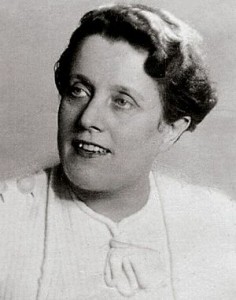
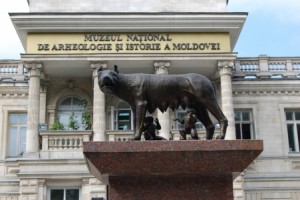
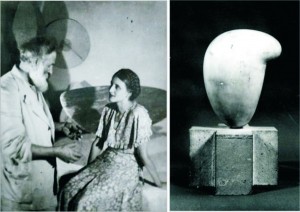
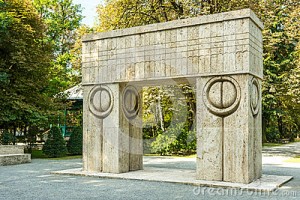

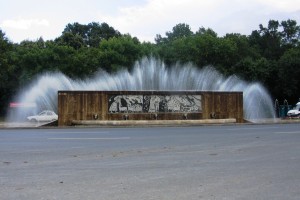


No Comments so far ↓
Like gas stations in rural Texas after 10 pm, comments are closed.